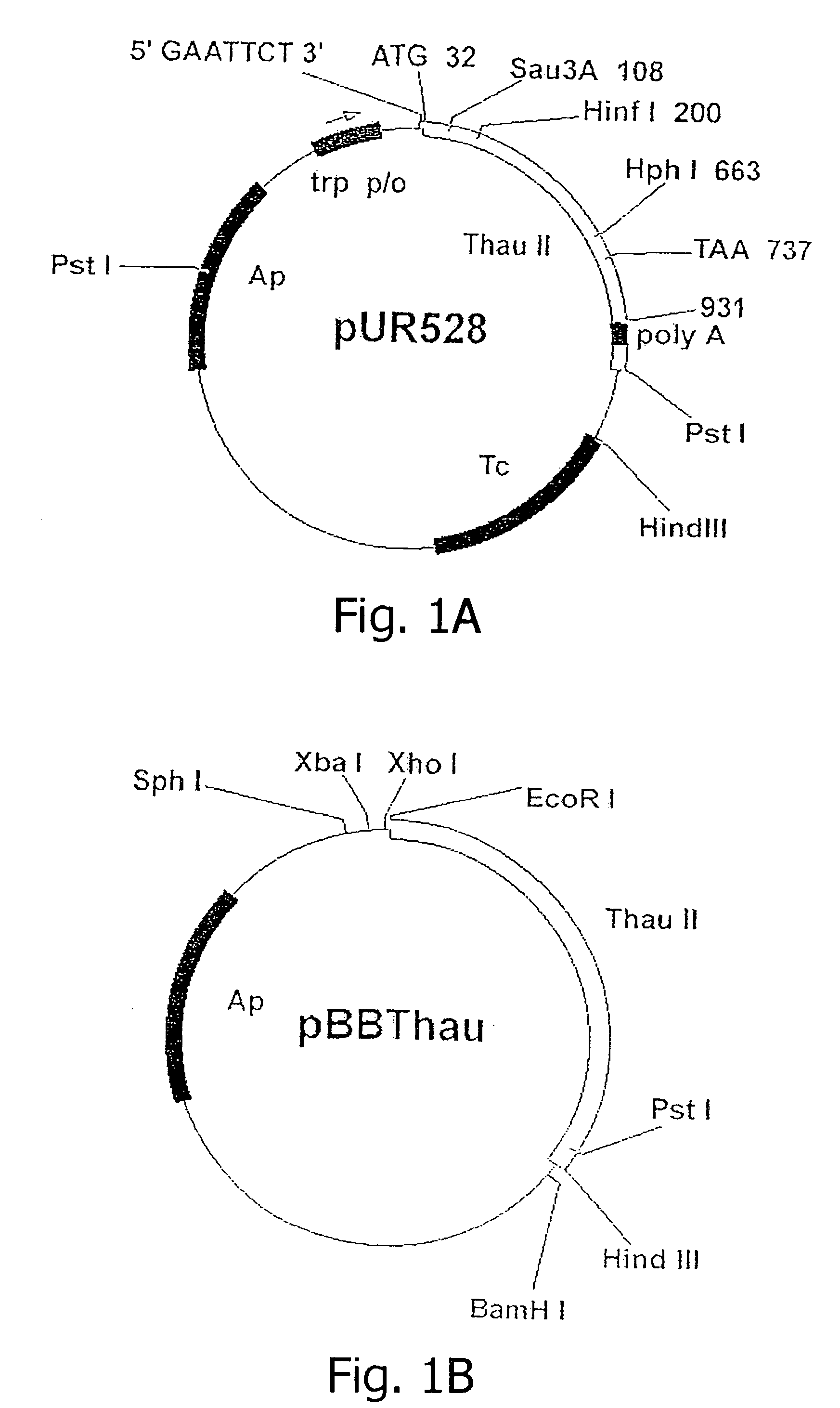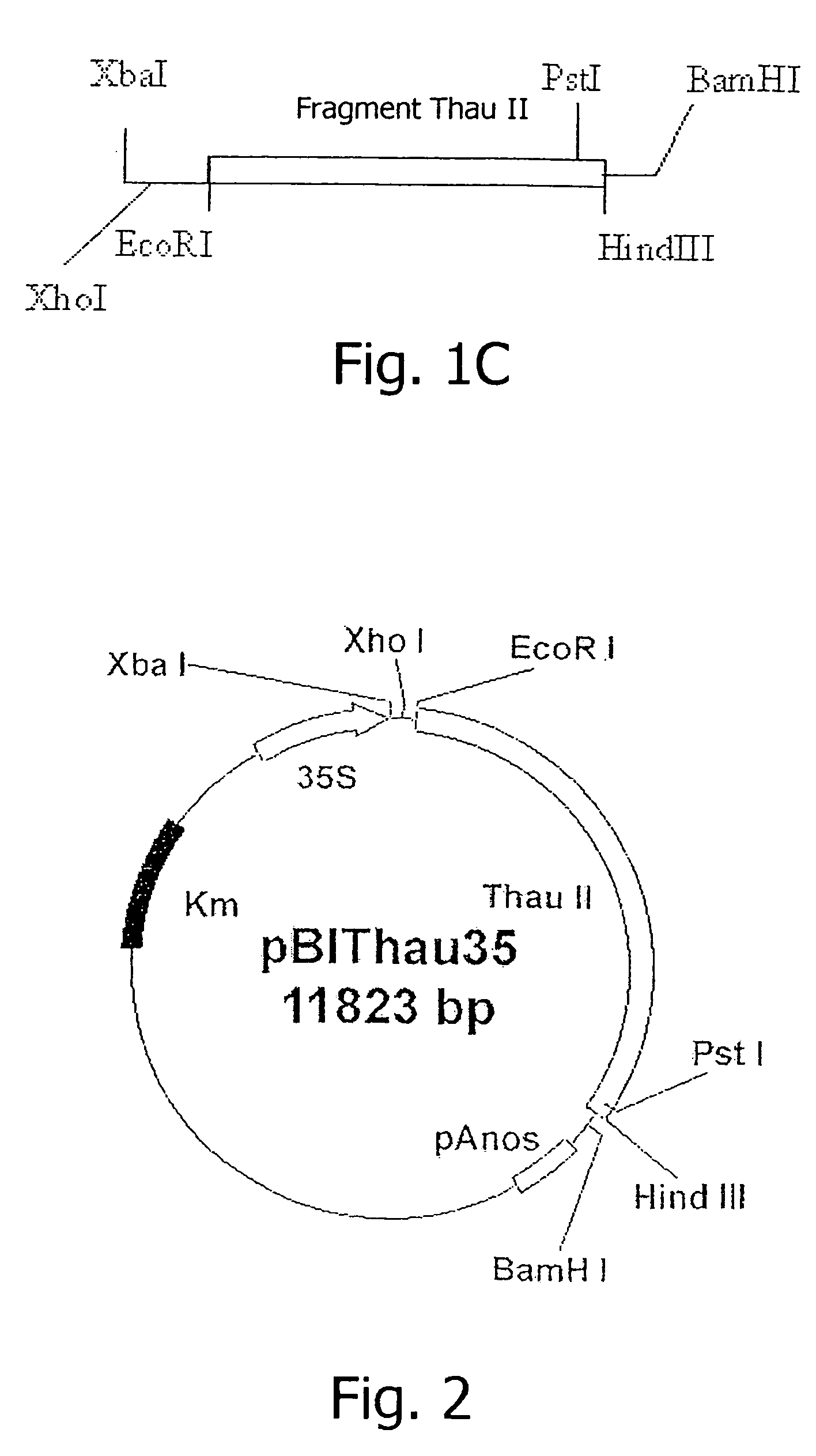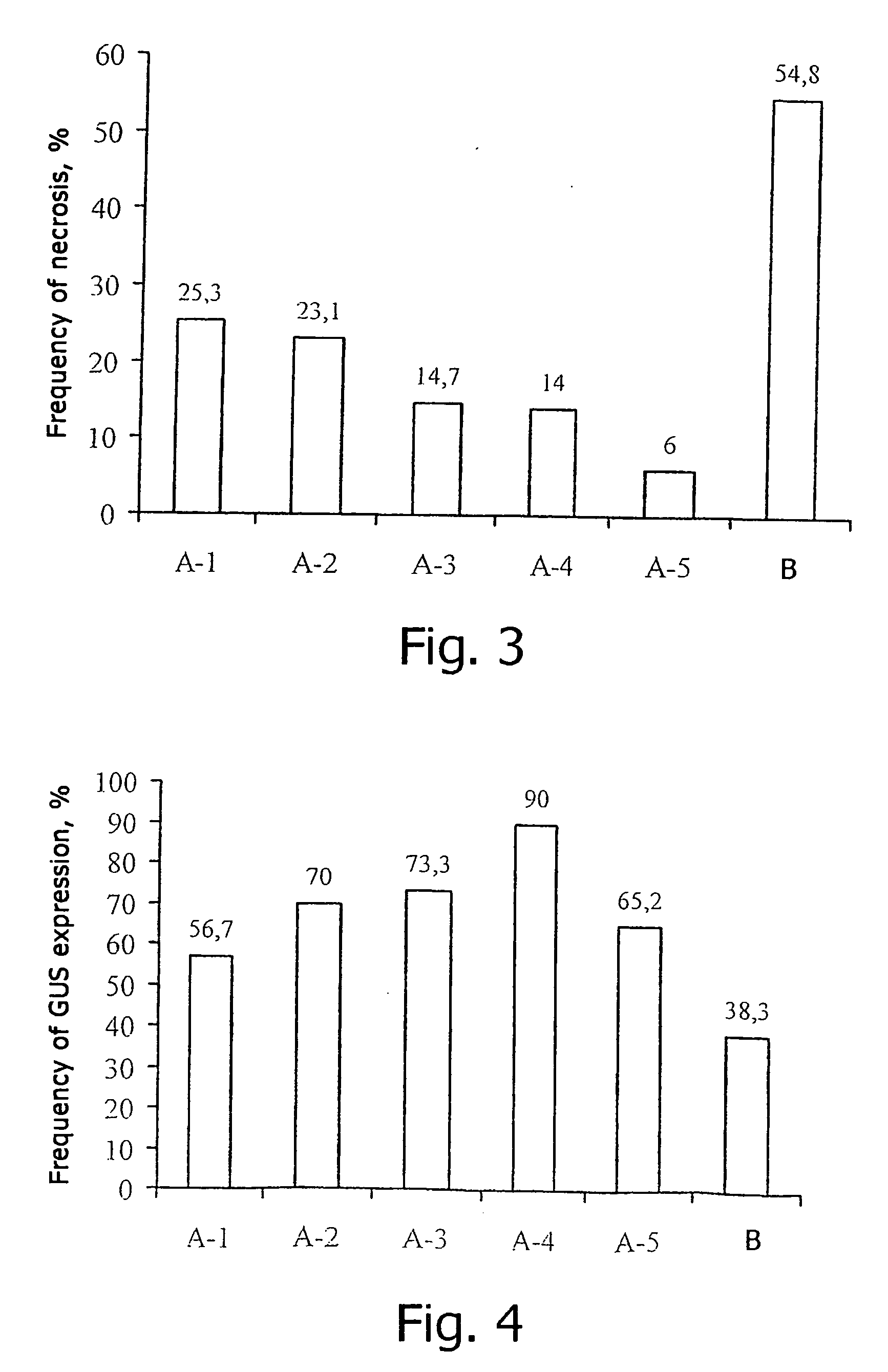Method for producing a transgenic plant with the aid of agrobacterium thumefaciens
a technology of agrobacterium thumefaciens and transgenic plants, which is applied in the field of gene engineering of plants, can solve the problems of affecting growth and development, material damage exceeding that caused, and limited effective cultivation of strawberry, and achieves enhanced transgenic shoot regeneration frequency, low frequency of explant necrosis, and enhanced transient expression.
- Summary
- Abstract
- Description
- Claims
- Application Information
AI Technical Summary
Benefits of technology
Problems solved by technology
Method used
Image
Examples
example 1
The Influence of Stagewise Co-cultivation with Agrobacterium Thumefaciens on the Frequency of Necrosis in the Tissues of Explants of Garden Strawberry of the Feuerverk Variety
[0123] The frequency of necrosis of the explants was evaluated visually after 15 days of cultivation on the selective medium. The plant material transformed by following the standard and improved methods was compared. The obtained data suggest that the improvement of the inoculation and co-cultivation stages tells positively on the survival of the explants and on preventing the development of necrotic reactions in the places of wounding. The data on the average frequency of the necrosis of the explants transformed according to the improved method (A), 16.6%, and according to the known method (B), 54.8%, show that the necrosis of the tissues was lowered almost by the factor of 3.5. The data are presented in FIG. 3.
example 2
The Influence of Stagewise Co-cultivation with Agrobacterium Thumefaciens on Transient GUS Expression in the Tissues of Explants of Garden Strawberry of the Feyerverk Variety
[0124] In the genetic transformation with the use of Agrobacterium thumefaciens, T-DNA with the required heterologous sequences is transferred into plant cells predominantly in the wounded sites, where direct contact of the bacteria with the injured cells is ensured. For evaluating the effectiveness of the proposed method, histochemical analysis of the GUS activity in the tissues of the explants was carried out on completion of the co-cultivation period. Such analysis makes it possible the frequency of the transfer and expression of the recombinant genes in the T-DNA composition from the bacteria into the plant cells. The plant material for the analysis is selected on expiration of the 3-days' period of co-cultivation, immediately after washing-off the explants from the bacteria. Histochemical staining of the e...
example 3
The Influence of Stagewise co-cultivation with Agrobacterium Thumerfaciens on the Frequency of Formation of Kanamycin-resistant Tissues (Km+) on the Initial Explants of Garden Strawberry of the Feyerverk Variety
[0125] In subsequent co-cultivation (after their stagewise co-cultivation with agrobacteria) on the RT medium complemented with 500 mg / l of cefotaxime and 50 mg / l of kanamycin, during first two monthly passages on the explants there takes place formation of direct transformants and non-organized callus groups. Km+ tissues (regenerants and callus groups) are formed predominantly on the sites of wounding.
[0126] By the end of the second passage the proportion of the explants on which transgenic tissue was formed, was calculated. From stage A-1 through stage A-4 a stable growth of the frequency of formation of Km+ tissues is observed. Apparently, this is associated, in the first place, with a decrease in the intensity of necrotic reactions in response to wounding and to the sub...
PUM
| Property | Measurement | Unit |
|---|---|---|
| time | aaaaa | aaaaa |
| time | aaaaa | aaaaa |
| concentration | aaaaa | aaaaa |
Abstract
Description
Claims
Application Information
 Login to View More
Login to View More - R&D
- Intellectual Property
- Life Sciences
- Materials
- Tech Scout
- Unparalleled Data Quality
- Higher Quality Content
- 60% Fewer Hallucinations
Browse by: Latest US Patents, China's latest patents, Technical Efficacy Thesaurus, Application Domain, Technology Topic, Popular Technical Reports.
© 2025 PatSnap. All rights reserved.Legal|Privacy policy|Modern Slavery Act Transparency Statement|Sitemap|About US| Contact US: help@patsnap.com



